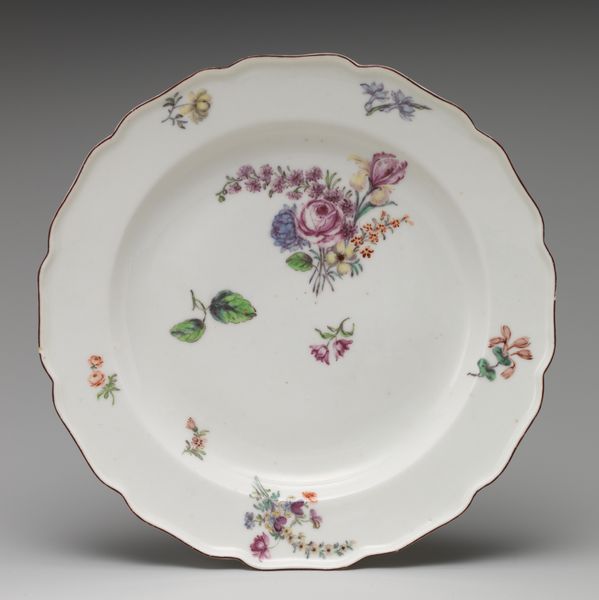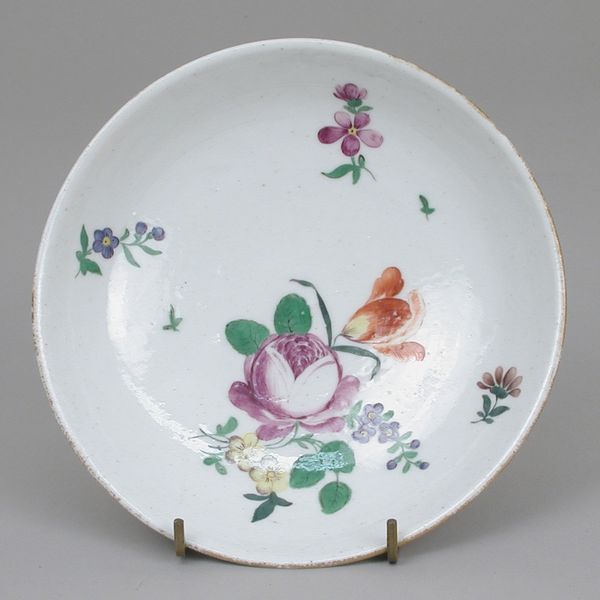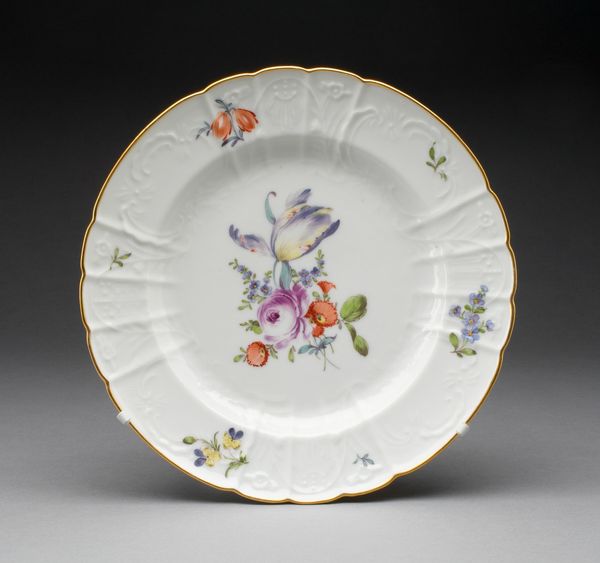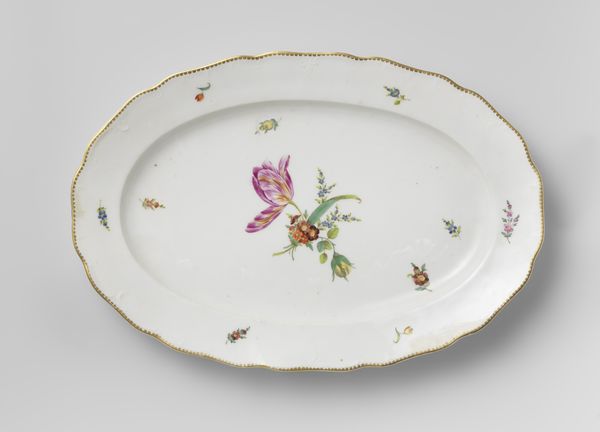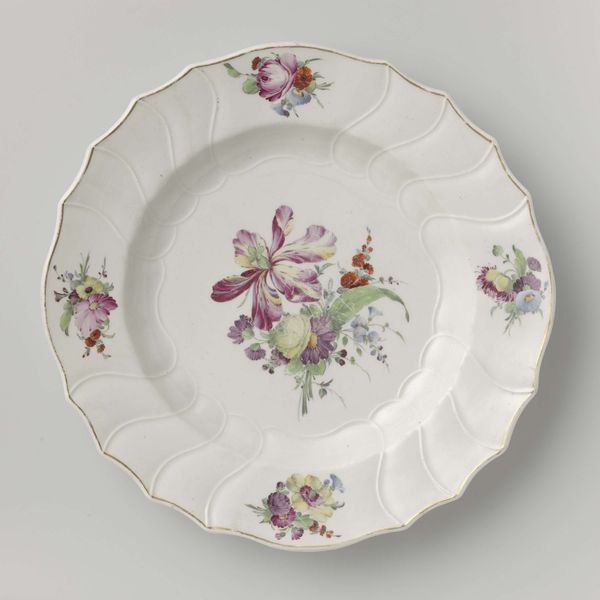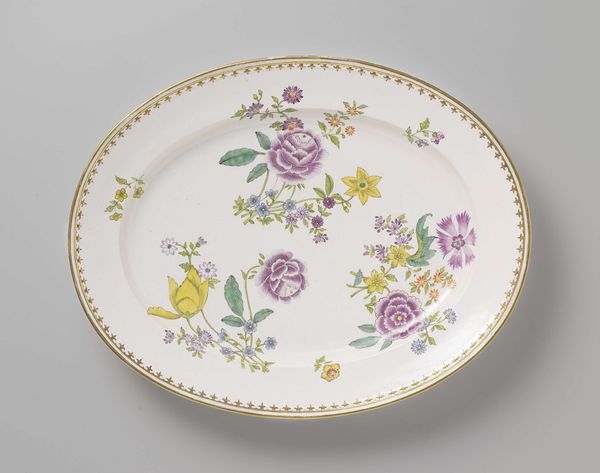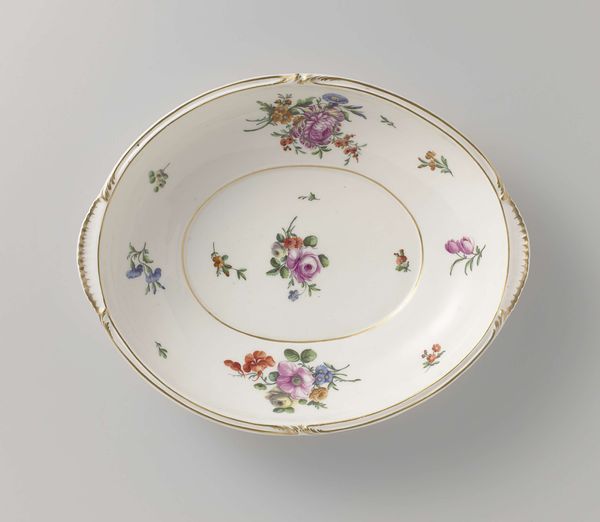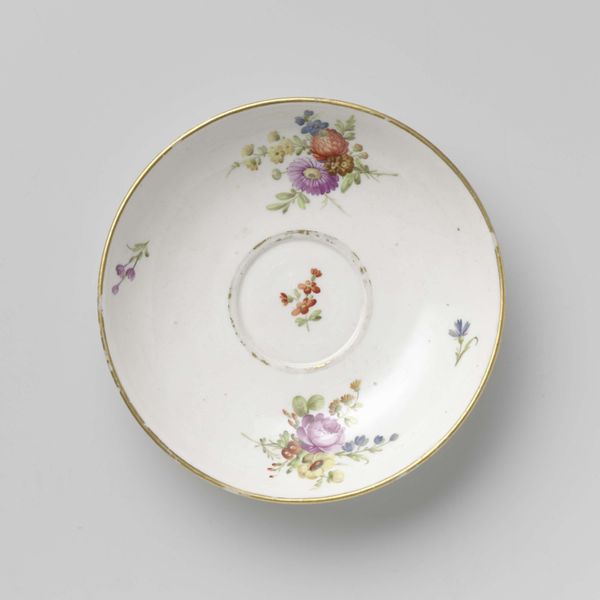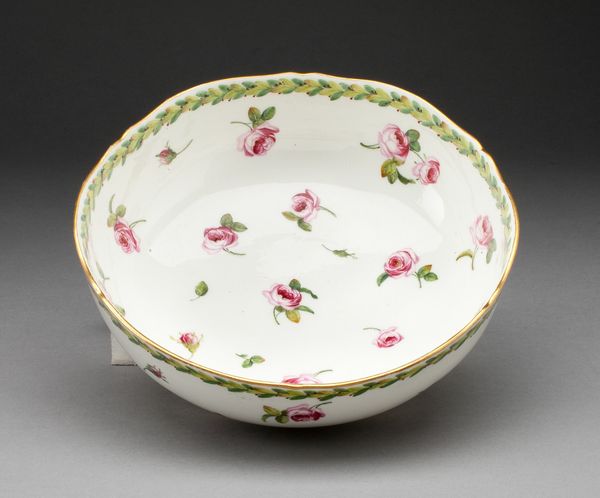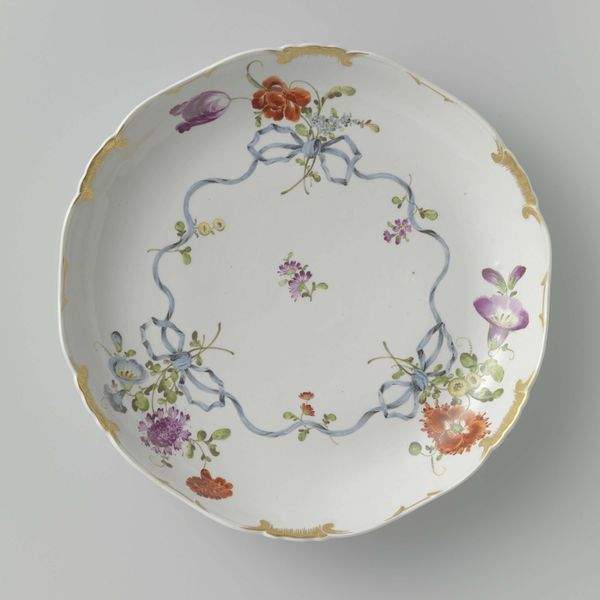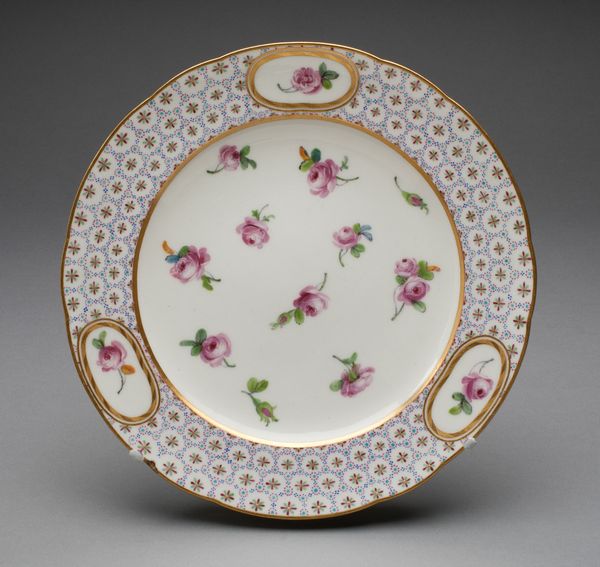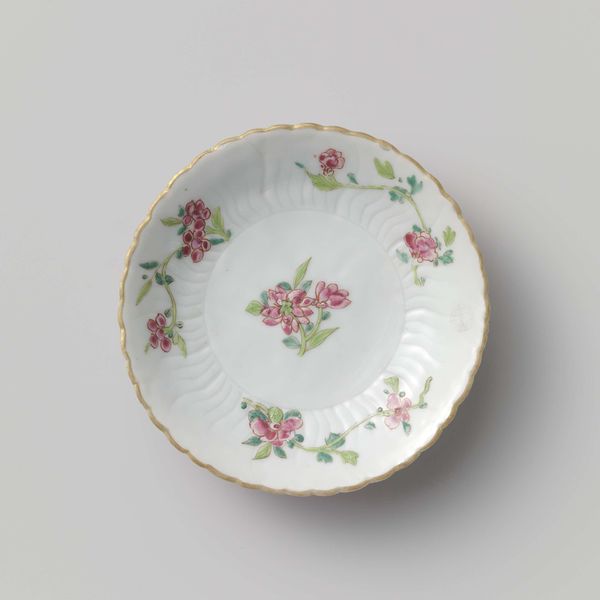
painting, ceramic, porcelain, sculpture
#
painting
#
ceramic
#
flower
#
porcelain
#
culinary art
#
food illustration
#
sculpture
#
ceramic
#
decorative-art
#
watercolor
Dimensions: Diameter: 11 3/4 in. (29.8 cm)
Copyright: Public Domain
Curator: This porcelain plate was crafted by the Nymphenburg Porcelain Manufactory between 1765 and 1775, and it's now housed at the Metropolitan Museum of Art. Editor: My first impression? It’s incredibly delicate. The scattered floral motifs and soft palette give it an airy, almost ephemeral feel. Curator: Precisely. These porcelain pieces, especially those produced by Nymphenburg, were emblems of luxury and refined taste in the 18th century. They reflect a complex interplay between craftsmanship, courtly patronage, and the burgeoning global trade of materials. Editor: From a purely formal perspective, the composition is quite pleasing. The asymmetry of the floral arrangement, balanced by the gold rim, creates visual interest. I also find that the individual brushstrokes show mastery, especially with how each flower differs slightly. Curator: It’s fascinating to consider the labor involved. The meticulous process of creating porcelain—mixing the clay, shaping the plate, firing it at high temperatures, and then delicately painting it—was a highly skilled undertaking. Who were the artisans behind this plate, what were their lives like, and what specific steps did they take to create it? Editor: I think that kind of inquiry risks overlooking what’s here—the inherent qualities of design. Observe how the translucent porcelain interacts with the light. See how each floral painting features soft gradients within a clear compositional structure. These choices indicate the artistic intention to achieve clarity within decorative design. Curator: But the form is intrinsically linked to its function and social role. The plate was not merely a decorative object. It was made for displaying food at table settings during elaborate meals. This speaks to the rituals and power structures of the aristocratic lifestyle, in which beauty was part of how they demonstrated affluence and refinement. Editor: Perhaps. However, by zooming in, the floral pattern suggests broader connections. These forms repeat throughout history across diverse forms such as tapestry, garden design, or wallpaper, where pattern, color and forms, like these light brushstrokes and gentle forms, speak on their own to what attracts the eye. Curator: I concede there's an undeniable elegance in the overall design of the object. Ultimately, it allows us a glimpse into a past world through a highly specific historical lens of labor and material practices. Editor: And through aesthetic consideration—with each angle and motif echoing artistic movements like rococo to reveal aspects about beauty, skill, and historical period.
Comments
No comments
Be the first to comment and join the conversation on the ultimate creative platform.
